Promise Pegasus J2 Review: The Smallest High Performance Thunderbolt Drive
by Anand Lal Shimpi on September 2, 2012 1:00 PM ESTPromise was the first to get us a Thunderbolt chassis with the Pegasus R4/R6. Not only was the Pegasus the first shipping Thunderbolt storage chassis, but it continues to be among the fastest on the market. If you've never seen one, the Pegasus R4/R6 is a 4 or 6 bay 3.5" external storage array with built in RAID and Thunderbolt controllers. Promise doesn't ship a chassis without drives, so you get to choose from between 4TB in the lightest configuration (4 x 1TB drives) at $1050 all the way up to 18TB (6 x 3TB) in the beefiest $3000 config. Sequential IO performance is great, generally hitting around 700MB/s for a 6-drive RAID-5 array. There's room for improvement, but running several drives in RAID-0 is typically not the best idea for redundancy.
The biggest issue with the Pegasus (other than cost) is that it doesn't ship with solid state drives. Although the use of 3.5" mechanical hard drives results in good sequential performance and great capacity, random IO performance suffers. After all, even a single SSD tends to have an order of magnitude better random IO performance than a hard drive. For most Thunderbolt use cases (e.g. tossing video/audio/photo work), the Pegasus' array of hard drives is fine. The world is clearly moving towards solid state storage however, and with LaCie offering an SSD version of its Little Big Disk series of Thunderbolt drives Promise had to respond.
The result is this, the Pegasus J2:
The design is extremely unique. While most Thunderbolt enclosures thus far have been home to either 2.5" or 3.5" drives, the Pegasus J2 houses two 6Gbps mSATA SSDs in RAID. I've already demonstrated the sort of performance you can get from RAIDing together two relatively cheap 6Gbps SSDs, and the current crop of mSATA drives can actually equal the performance of their larger 2.5" brethren, so the J2 design makes a lot of sense. The real killer is this: the Pegasus J2 can deliver performance similar to the Pegasus R6, and in many cases it'll outperform it. Here's a shot of the J2 on top of my personal R6 on my desk:

That's the beauty of solid state storage. That little box on top can outperform the big thing beneath it.
Capacity is a problem of course. Promise is only offering the Pegasus J2 in 256GB and 512GB capacities, while you can up to 35x that storage in a maxed out Pegasus R6. I'm less interested in the J2 from a practical standpoint for now, and more intrigued by the form factor and what it could mean for future external Thunderbolt storage. We have the technology now to hit 1TB inside the J2 chassis, and next year that number will grow to 2TB with the move to IMFT's 128Gbit 20nm NAND. The capacity problem goes away over time, but for now it's a definite concern.
Promise also isn't releasing any pricing information today, but rest assured that the Pegasus J2 will be expensive. In our My Book VelociRaptor Duo article I included a chart of the cost-per-GB of many currently available Thunderbolt enclosures:
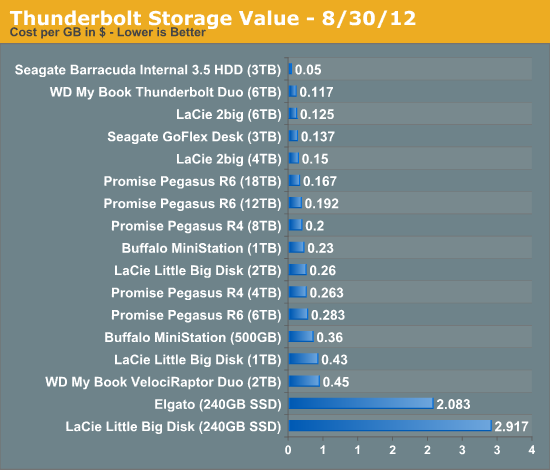
LaCie uses Intel SSDs in its Little Big Disk at $2.917 per GB. It's possible that Promise can do better, we'll have to wait and see closer to official availability if it can however.
The Drive & Bundle
The J2 is subtly styled. Rather than being a rectangle there's a slight wedge taper in the middle of the profile. It sort of looks like my attempts to draw a sportscar in middle school, but better. Build quality and feel are top top notch, better than the Pegasus R-series for sure. The chassis has a solid but not heavy feel to it thanks to material choices. The top cover is a thick piece of aluminum, while the bottom of the chassis is finished in a soft touch plastic. Around back there's a single Thunderbolt port and an optional DC input. The J2 can be operated using bus power or pull from a supplied power adapter. You can switch modes on the fly, you simply get more performance when plugged into the wall. Remember the Thunderbolt spec only allows around 10W to be supplied over the cable itself. Take into account two 6Gbps SSDs (each of which likely draws between 3 - 5W under load), the internal SATA controller, and the power consumption of the Thunderbolt controller + active cable and you're easily beyond 10W. Promise has its own custom SSD and ASMedia SATA controller firmware that allows it to throttle performance when running on Thunderbolt bus power to keep below that 10W maximum. There's no reconfiguring or software changes needed when you switch between operating modes, just plug in the drive's external power and you get better performance. The bulk of the J2's power still comes from the Thunderbolt bus. With the external power adapter plugged in the J2 draws at most 1.1W from it at idle, and up to 2.9W under load - the rest comes over the Thunderbolt cable. A single LED indicator on the back of the drive lets you know what mode you're running in. Green for bus powered (low performance) and blue for external power (high performance):
The J2's optional power brick comes with a set of removable plugs for international use:
The Pegasus J2's bundle also comes with a carrying case. There's no Thunderbolt cable included unfortunately.
The chassis is super easy to get inside, there are three phillips head screws that keep the two pieces together. Two are beneath rubber feet, while the third is in the middle of the base of the chassis. Once removed you can slide the aluminum cover forward and pry the two pieces apart:
There's a small, notebook fan inside the aluminum cover to the J2 (if you are taking one of these things apart be careful when opening the J2 as the fan gets power from the underside of the PCB). The fan never gets too loud but it helps keep the tiny SSDs cool.
The PCB itself is a pretty neat looking design. There are two mSATA SSDs placed side by side:
Thermal pads cover the bottom half of the drives, the top half is cooled by the J2's fan. The drives use Phison's PS3108 6Gbps SATA SSD controller, typically used in entry level, value SSDs. Sequential performance is good, but random write speed isn't and in a heavily fragmented state performance can drop significantly. I suspect Promise chose the Phison solution because of the low cost, low power profile and the ability to modify firmware. The only problem is I'm not sure if I'd be too comfortable paying for a premium product using distinctly value SSD controllers.
SATA duties are handled by ASMedia's ASM1061 PCIe 2.0 x1 to 6Gbps SATA controller. Like most Thunderbolt enclosures that rely on a RAID array of drives, the Pegasus J2 uses software to handle all striping/mirroring duties. In the case of the J2 under OS X, you'll be using Apple's Disk Utility to switch between RAID-0 and RAID-1.
Thunderbolt support is provided by an Intel Port Ridge controller (the tiny IC labeled L2201). Port Ridge is a Thunderbolt end point controller, meaning it only has a single Thunderbolt input and can't pass PCIe/DP to any other devices down the chain - it terminates the Thunderbolt chain. Port Ridge is lower cost Thunderbolt controller often used for these types of tiny, bus powered devices. Since you can only have one bus powered device per Thunderbolt chain, it makes sense to use a controller that can only operate as an end point.


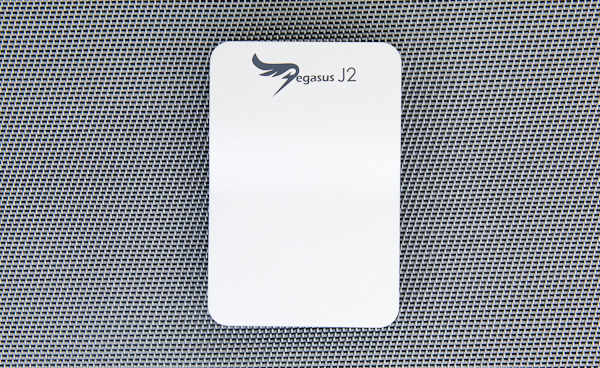





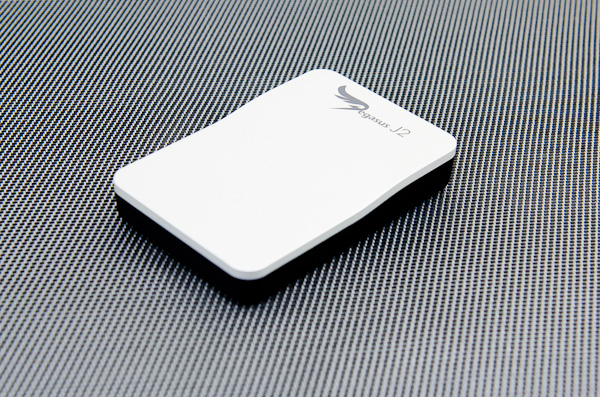


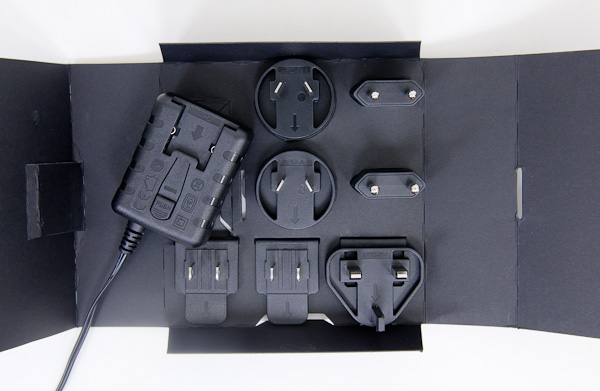
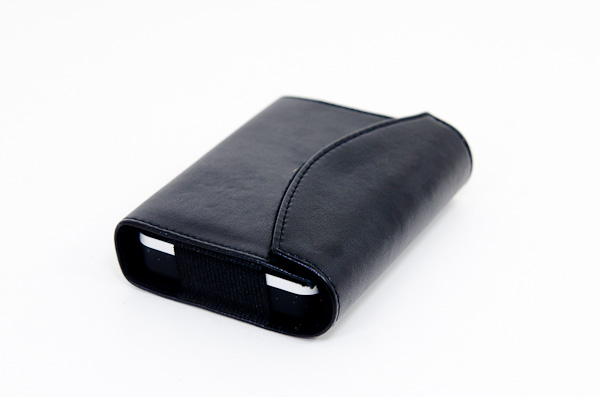
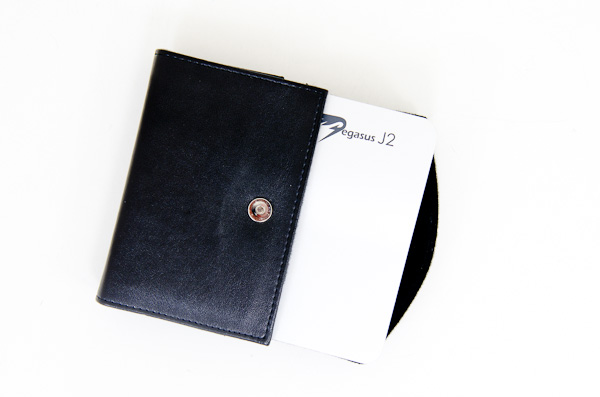
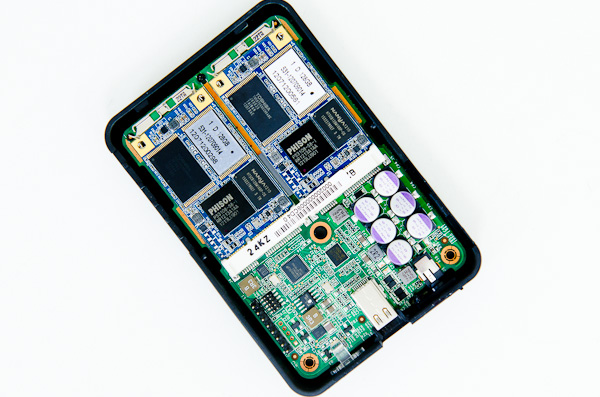

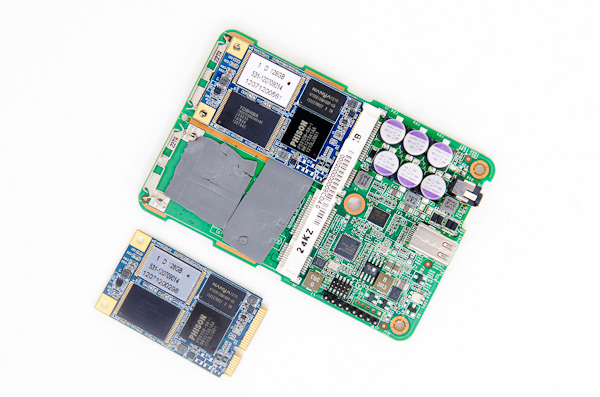








24 Comments
View All Comments
macuser2134 - Monday, September 3, 2012 - link
Clearly the manufacturer wanted to make some high margins here. But until the industry as a whole can wake up to tackling the problem, its pointless. I honestly can't agree with Anand that custom form factor SSDs are the way to go. Just look at all the expense to the consumer with Apple ones. There is no competition there. It should be clear to everyone that we need a standardized form factor, not a custom one.Of course the SATA alliance gave us the mSATA form factor. Which would be absolutely perfect except its just prohibitively too short. Add merely 20-30mm of card length to mSATA and it can fit double the capacity (8 NAND packages instead of 4). Or extend again to have what is essentially a Macbook Air gumstick form factor. However with a standardized mSATA connector then it would be trivial to make a single card slot which can accept any of those 3 possible card lengths. So entirely backwards-compatible. You might call that an informal extension of the standard. If you will. But its entirely feasible and rational.
Consumers need to have an open market like the 2.5" SSD market is today. Because the 2.5" form factor is no longer an ideal size for SSDs, as was designed for mechanical drives. Too wasteful of the space inside newer notebooks - really "ultrabooks". And perhaps short-sighted of Intel not to do anything about this in their "ultrabook" campaign. Until that problem is addressed we will continue to be offered a variety of sub-standard, not very cost effective, and not very upgradeable products just like this one.
At the moment. For the price of these types of enclosure, most people would be better off buying a pair of 2.5" 512Gb SSDs and installing them into notebook w/optibay. Then RAID'ing the drives themselves (no difference to this thing). No messy bus power AC adaptor or expensive Thunderbolt interfaces required. Twice the capacity, better performance.
Icehawk - Monday, September 3, 2012 - link
I don't know why someone would say this is a good enclosure - first, the shape is terrible - how can I stack anything on top of it? Second, it looks downright huge in the photo on top of the R6 - with mSata this thing should be about the size of a 2.5" or maybe 3.5" drive. Third, it needs a fan? Oy. Make the darn thing all aluminum and have it act as a heatsink if it needs it.philipma1957 - Monday, September 3, 2012 - link
I have owned and tested and runlacie little big disks
promise pegasus
sonnet t-bolt express card adapter
seagate t-bolt adapter.
to run a 2 drive 512gb raid0 it will need the external power. this kills it usefulness.
also the i/o will not be faster. a fan is nuts. it will whine like a female dog.
a 1 drive 256 gb msata with no fan and a good heatsink would have been the way to go.
It could have been smaller then a 2.5 inch drive.
since crucial sells the mSata 256gb ssd for about 225.
you could have this for under 400.
it is fully bootable and with mac you can bring it from machine to machine as its osx.
both a good and bad idea good for connivence bad for security.
right for my money a lacie little big disk is under 240 refurbished from a major mac seller. buy it pull the fan pull the two 500 gb drives sell the drives used on ebay for 85-110 brings your little big disk down to 135. put in 2x 512gb crucial m4's and a 1tb ssd for under 900 or use 2x 256gb ssds and a 512b ssd for under 500
InspiredCarpet - Monday, September 3, 2012 - link
How can something be "extremely unique"? It's either unique or it's not. You can't have differing scales of unique.Think binary: 1 = unique, 0 = not unique.
dsumanik - Monday, September 3, 2012 - link
Same way you can have "jumbo shrimp", believe michael jackson never touched a little boys PP, have a tiger for a house pet, or believe OJ's "if the glove doesn't fit, then you cant commit" defense.... its all so utterly stupid.........but you just gotta roll with it!*.evil grin*
lol!
repoman27 - Monday, September 3, 2012 - link
If the ASM1061 only has a PCIe 2.0 x1 connection, how does this device achieve sequential speeds in excess of 500 MB/s? Is there a second ASM1061 on the other side of the board?shunya901 - Monday, September 3, 2012 - link
http://commonprosperity.org/Dear friends, do you want to have some different things? Whether you want to give your relatives and friends,
take a few different exotic gifts? Whether you want to buy some cheap benefits of thing? So please, let us
begin now! Click on our website (http://commonprosperity. org/) Will bring you different surprise,
commonprosperity.org@hotmail.com
............ ./′ˉ/'...'/ˉ/`
........../'/.../..../...../ˉ\
........('(...′...′....ˉ~ /')
.........\.................'../
..........\................../
............\..............(
..............\.............\....http://www.frankfushi.com/
phillyry - Tuesday, September 4, 2012 - link
i think tb ssd's are a good idea and agree with anand re: the form factor and design.of course we'd all like to see the price lower but these things take time. new tech is always expensive. it's called the "either pay a hefty premium to be the first or wait a year or two" game.
like he said, the idea is good. it'll just take a little time for the tech to mature. as a mba user, i could def see the utility in such a product for imovie projects but will personally be waiting until it's avail in 512gb and cheaper.
good concept but just takes time.
CalaverasGrande - Tuesday, September 4, 2012 - link
Where are you seeing a price for this box that you guys "won't buy because of the insane price". Aren't you being premature?"Promise also isn't releasing any pricing information today, but rest assured that the Pegasus J2 will be expensive."
I think I'll bite my tongue until actual prices are announced.
philipma1957 - Wednesday, September 5, 2012 - link
will I can build a 512gb lacie little big disk raid0 ssd for under 500.. 2x crucial 256gb ssds on sale for 180 each is 360. A refurbhshed lacie littleb big disk is 234. comes to 594. I sell the mechanical hdds on ebay for 100 and my cost is 494. if promise sells there 512gb unit for 494 I will eat my hat. By the way my ssds would have 3 year warranty so only part not warrantied is the little big disk which was under 140 in cost..I have 3 of these in use for months as osx for mac they are pretty much flawless.. They are also a security risk to any mac user that has thunderbolt as I can plug in and boot there computer and copy the hdd in there computer. BTW this portable boot box is the biggest reason thunderbolt is held back. Think about what you can do with it.